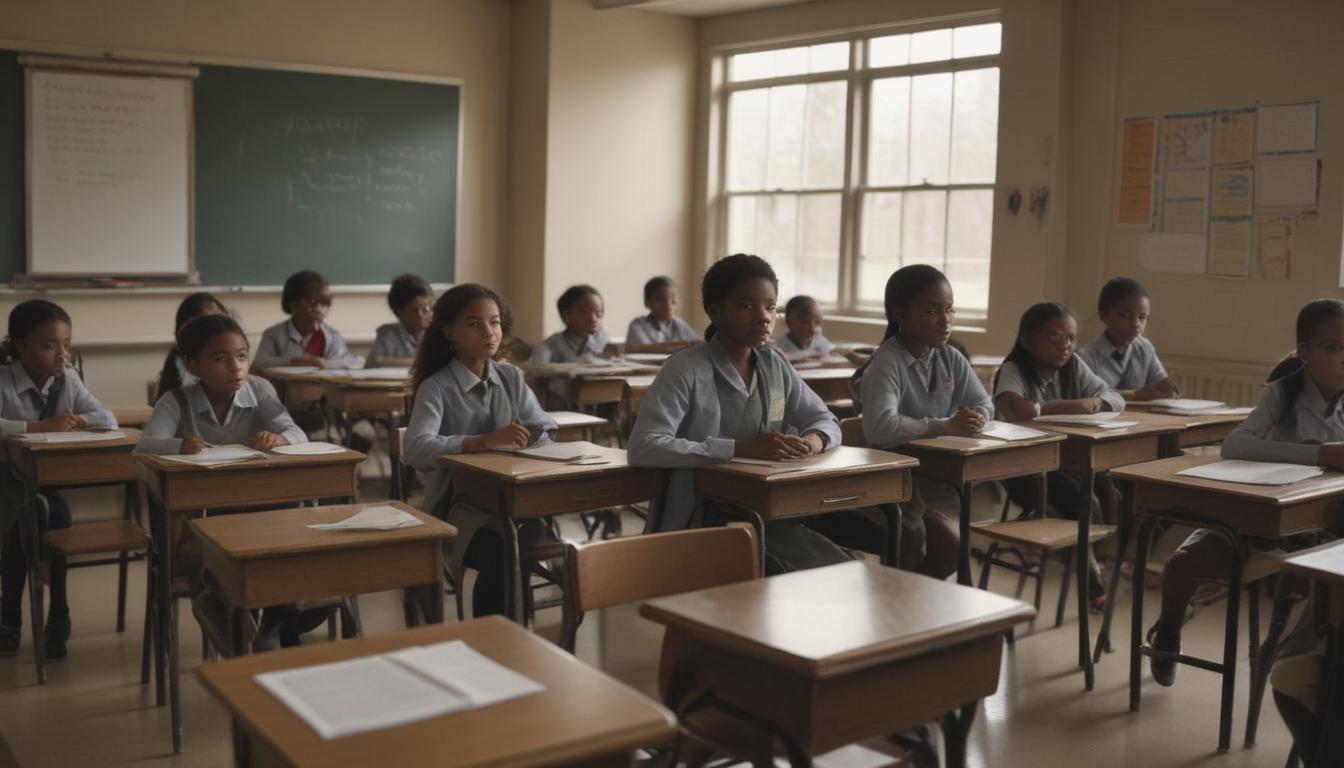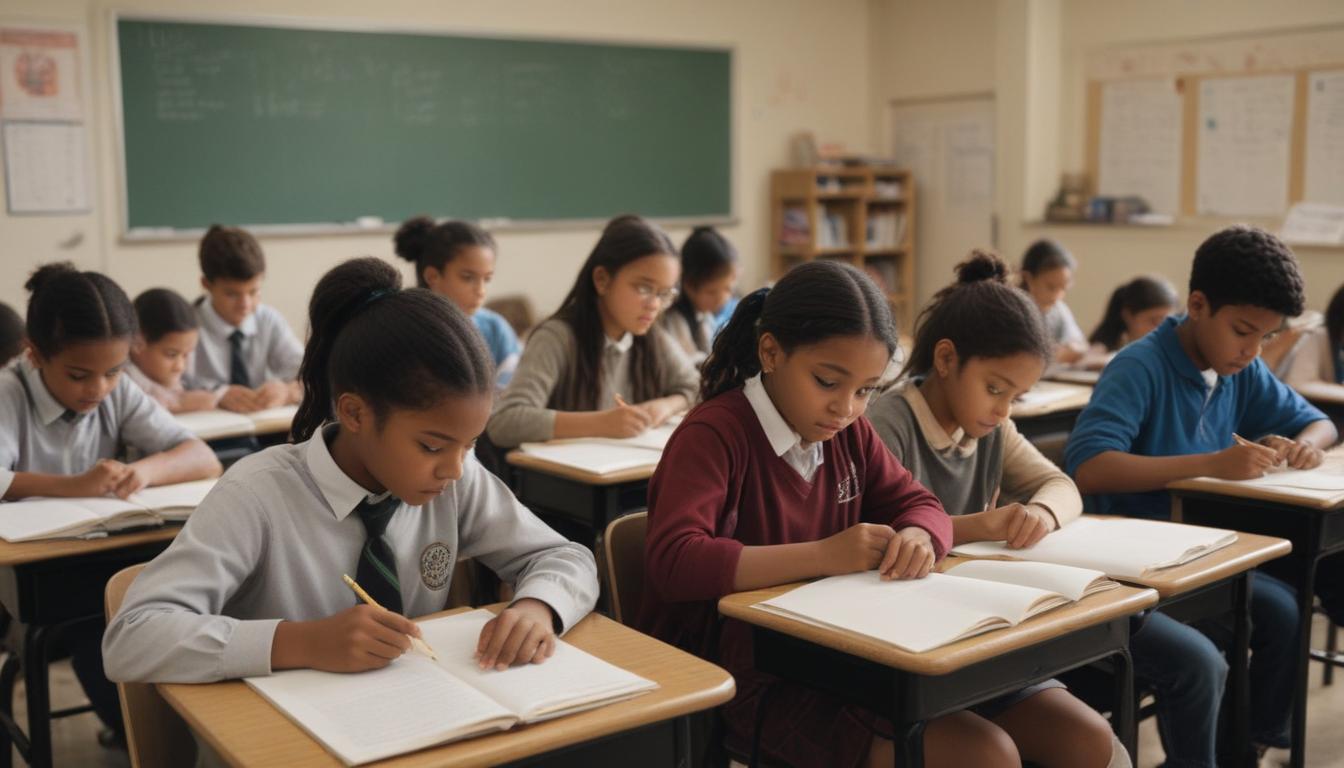Now Reading: Education Access for Every Child
- 01
Education Access for Every Child
Education Access for Every Child

Education Equity Ensuring Access for All
Have you ever looked at the state of education and felt a sense of unfairness? You see some schools with state-of-the-art technology, small class sizes, and endless extracurriculars, while others just miles away struggle with outdated textbooks and overcrowded classrooms. This disparity can feel overwhelming, leaving you wondering why every child doesn’t get the same chance to succeed. The problem is not a lack of effort from students or teachers, but a systemic issue of inequality. The solution lies in a powerful and transformative concept known as education equity.
Education equity is not just a buzzword; it is a fundamental framework for correcting historical and systemic disadvantages, ensuring that every single student has the resources and support they need to thrive. It is the belief that a child’s future should be determined by their potential, not their zip code, race, or economic background. This guide will break down what education equity truly means, the barriers that stand in its way, and the actionable steps we can all take to build a fairer and more just educational system for generations to come.
Understanding the Difference Between Equity and Equality
To champion education equity, we first must understand how it differs from equality. While the two terms are often used interchangeably, their meanings and applications in an educational context are vastly different. Understanding this distinction is the first step toward creating truly effective change. Equality in education means giving every student the exact same resources. Imagine a school district giving every single student an identical laptop. On the surface, this seems fair. Everyone gets the same thing.
However, equity recognizes that not all students start from the same place. It is about fairness and justice, ensuring that each student receives the specific resources and support they need to reach their full potential. In our laptop example, an equitable approach would acknowledge that some students may not have internet access at home, while others might be English language learners who need specific software, or students with disabilities who require assistive technology. Equity doesn’t mean giving everyone the same laptop; it means making sure every student has the tools and connectivity they need to use that laptop successfully. Equity is about leveling the playing field, not just giving everyone the same uniform.
The Major Barriers to Educational Equity
The path to education equity is blocked by significant and deeply ingrained barriers. These are not simple problems with easy fixes; they are complex, systemic issues that have created deep-rooted disparities over decades. Acknowledging and understanding these hurdles is critical to dismantling them and building a new foundation.
Socioeconomic Factors and Funding Gaps
Perhaps the most significant barrier to equity is the way our schools are funded. In many areas, school funding is heavily reliant on local property taxes. This model inherently creates a system of winners and losers. Wealthy communities with high property values can generate substantial funding for their schools, resulting in higher teacher salaries, modern facilities, and a wealth of academic programs. Conversely, low-income communities have a smaller tax base, leading to perpetually underfunded schools that lack the resources to meet even basic needs.
This funding gap has a direct and devastating impact on students. Children from low-income households are more likely to face challenges like food insecurity and housing instability, which directly affect their ability to focus and learn in the classroom. These are the very students who need more support—more counselors, nutrition programs, and academic interventionists—but their schools are often the least equipped to provide it. This creates a vicious cycle where a student’s socioeconomic status becomes a primary predictor of their educational outcome, reinforcing generational poverty.
The Digital Divide and Resource Accessibility
In our increasingly digital world, access to technology is no longer a luxury; it is a necessity for a modern education. The “digital divide” refers to the gap between those who have reliable access to computers and the internet and those who do not. This divide became painfully obvious during the COVID-19 pandemic, when millions of students without home internet or adequate devices were effectively locked out of their virtual classrooms. The problem persists, limiting students’ ability to complete homework, conduct research, and develop essential digital literacy skills.
Beyond technology, the resource gap extends to the most fundamental tools of learning. Many underfunded schools are forced to use textbooks that are decades old, with crumbling bindings and outdated information. They may lack safe and functional science labs, well-stocked libraries, or access to enriching programs in the arts and music. When students are denied access to these critical resources, they are denied the opportunity to explore their passions and develop the well-rounded skills needed to succeed in college and the workforce.

Building a Foundation for Equity in Schools
Overcoming these profound challenges requires a dedicated and multifaceted approach from everyone involved in a child’s education. Creating an equitable system is not the sole responsibility of teachers or administrators; it demands a united effort from communities and policymakers committed to lasting change. The goal is to build a new foundation where every school is a place of opportunity.
Creating Inclusive and Supportive Classrooms
Equity begins inside the classroom. It involves fostering an environment where every student feels seen, valued, and understood. This is achieved through culturally responsive teaching, a practice where educators integrate students’ cultural backgrounds, experiences, and perspectives into the curriculum. When students see themselves reflected in their learning materials, they become more engaged and motivated. This means moving beyond a one-size-fits-all curriculum to include diverse authors, historical perspectives, and real-world problems that resonate with the student body.
Furthermore, building a supportive classroom means addressing implicit biases and rethinking disciplinary practices. Zero-tolerance policies have been shown to disproportionately affect students of color and students with disabilities, pushing them out of the classroom and into the school-to-prison pipeline. An equitable approach involves implementing restorative justice practices, which focus on repairing harm and teaching conflict resolution rather than simply punishing students. This helps build a stronger, more empathetic school community where every student is treated with dignity.
The Role of Community and Policy
While classroom practices are vital, true equity cannot be achieved without systemic change at the community and policy levels. Parents, caregivers, and community members are powerful advocates for change. This can mean attending school board meetings to demand fair resource allocation, volunteering for tutoring programs, or supporting local nonprofits that provide essential services like after-school care and meal assistance. When a community rallies around its schools, it sends a powerful message that every child’s education matters.
Ultimately, the most deeply rooted barriers require bold policy solutions. This includes advocating for state and federal governments to overhaul inequitable school funding formulas, replacing property tax-based models with systems that prioritize student need. It means pushing for investments in universal broadband to close the digital divide and creating programs that attract and retain highly qualified teachers in the schools that need them most. Voting for leaders who champion education equity and holding them accountable is one of the most powerful tools we have to ensure our education system lives up to its promise of opportunity for all.


































